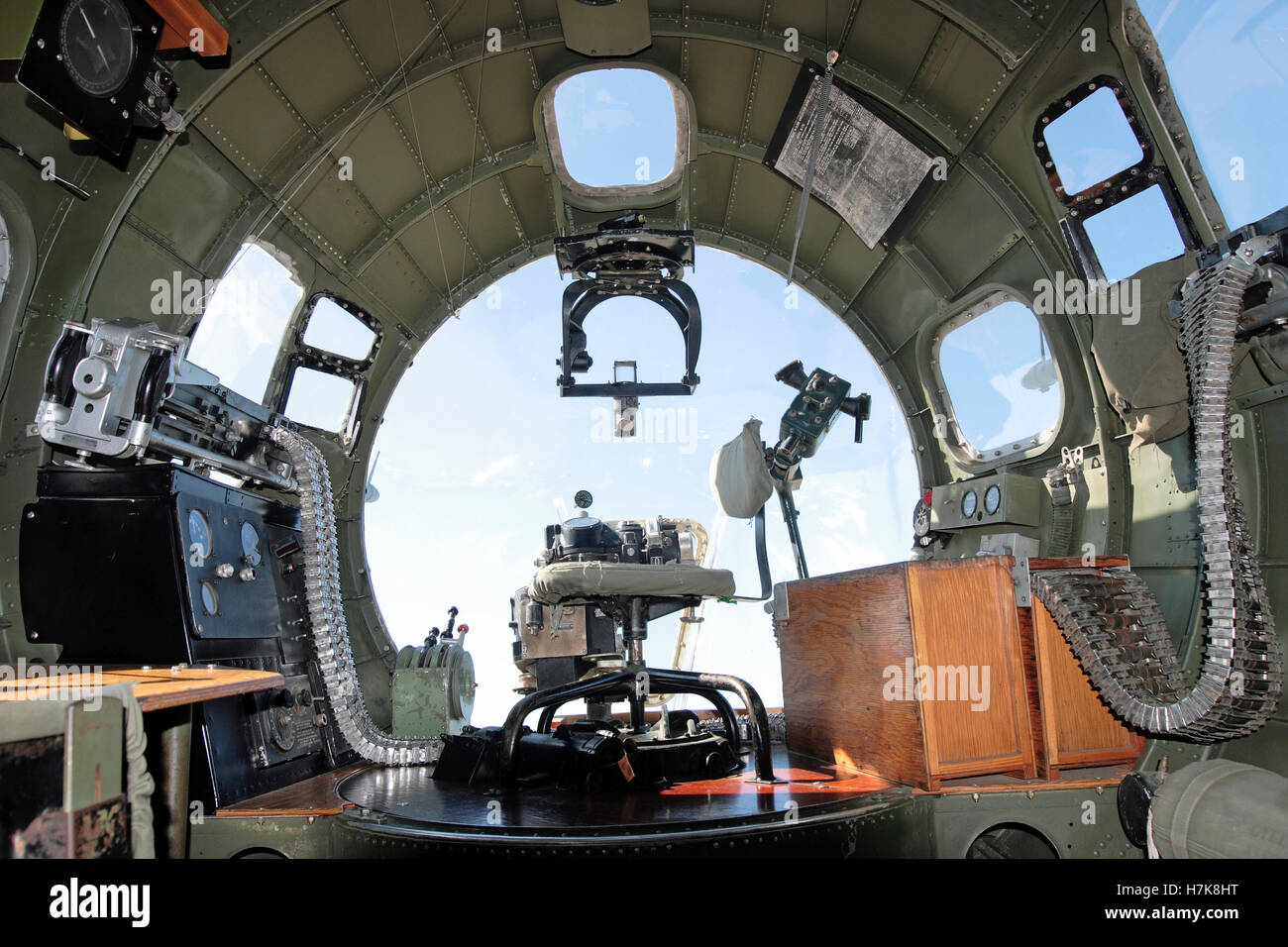Inside the nose gunner's position in a B17 B-17 world war 2 bomber aircraft

Image details
Contributor:
Cayman / Alamy Stock PhotoImage ID:
H7K8HTFile size:
30.5 MB (1.3 MB Compressed download)Releases:
Model - no | Property - noDo I need a release?Dimensions:
4000 x 2667 px | 33.9 x 22.6 cm | 13.3 x 8.9 inches | 300dpiDate taken:
4 February 2008More information:
B-17 ww 2 bomber The Boeing B-17 Flying Fortress is a four-engine heavy bomber aircraft developed for the United States Army Air Corps (USAAC). Competing against Douglas and Martin for a contract to build 200 bombers, the Boeing entry outperformed both the other competitors and more than met the Air Corps' expectations. Although Boeing lost the contract due to the prototype's crash, the Air Corps was so impressed with Boeing's design that they ordered 13 B-17s. The B-17 Flying Fortress went on to enter full-scale production and was considered the first truly mass-produced large aircraft, eventually evolving through numerous design advancements. The B-17 was primarily employed by the United States Army Air Force (USAAF) in the daylight precision strategic bombing campaign of World War II against German industrial, civilian and military targets. The United States Eighth Air Force based in England and the Fifteenth Air Force based in Italy complemented the RAF Bomber Command's nighttime area bombing in Operation Pointblank, to help secure air superiority over the cities, factories and battlefields of Western Europe in preparation for Operation Overlord.[4] The B-17 also participated, to a lesser extent, in the War in the Pacific, where it conducted raids against Japanese shipping. From its pre-war inception, the USAAC (later USAAF) touted the aircraft as a strategic weapon; it was a potent, high-flying, long-ranging bomber capable of unleashing great destruction, able to defend itself, and having the ability to return home despite extensive battle damage. It quickly took on mythic proportions.[5][6][7] Stories and photos of B-17s surviving battle damage widely circulated, increasing its iconic status.[8] Despite an inferior range and bombload compared to the more numerous B-24 Liberator, [9] a survey of Eighth Air Force crews showed a much higher rate of satisfaction in the B-17.[10] With a service ceiling greater than any of its Allied contemporaries, the B-17 e